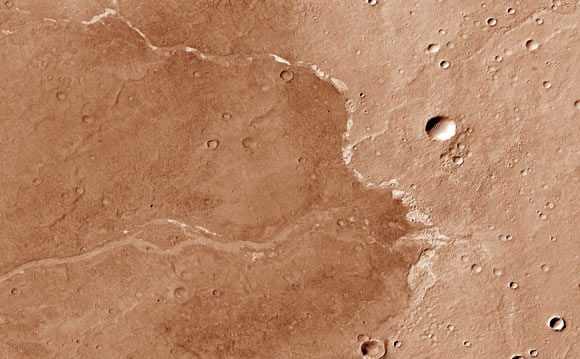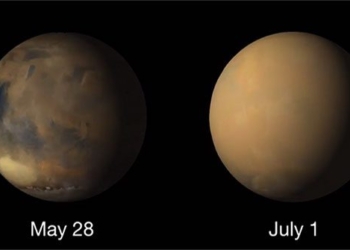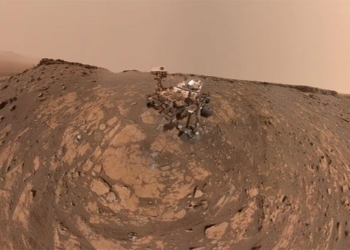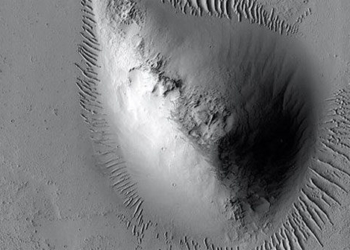Images captured by NASA’s Mars Reconnaissance Orbiter reveal clear evidence of liquid water on the surface of the planet during a period previously thought to be dry.
This new discovery debunks the long-held belief that Mars only had a brief period as a “blue planet” before becoming arid around 3 billion years ago. Analysis of data from the spectrometer on NASA’s Mars Reconnaissance Orbiter (MRO) shows that liquid water persisted on the surface of Mars approximately 2 billion years ago.

Salt traces in a 1.5 km wide impact crater indicate that there was once a pond of water here – (Photo: NASA)
Many previous studies have suggested that Mars—a planet within the “habitable zone” of the Solar System—was indeed capable of supporting life and had a system of rivers, lakes, and oceans similar to Earth. However, some mysterious processes led to its loss of water and the arid conditions we see today, resulting in the extinction of life.
Speaking to Sci-News, Professor Bethany Ehlmann from the California Institute of Technology and Dr. Ellen Leask from the Johns Hopkins University Applied Physics Laboratory stated: “Our findings focus on chloride salt deposits left behind after cold water flowed through the area and evaporated.”
While the terrain in some regions of Mars previously suggested the presence of flowing water, this is the first time scientists have found direct mineral evidence confirming the presence of liquid water.
The research team discovered numerous salts in various areas across gently sloping volcanic plains, particularly where they believe ancient shallow ponds once existed.
Liquid water is one of the essential conditions for life to exist on a planet, so this discovery further supports NASA’s decision to prioritize Mars as a top target in the search for extraterrestrial life.
This study has just been published in the journal AGU Advances.





















































